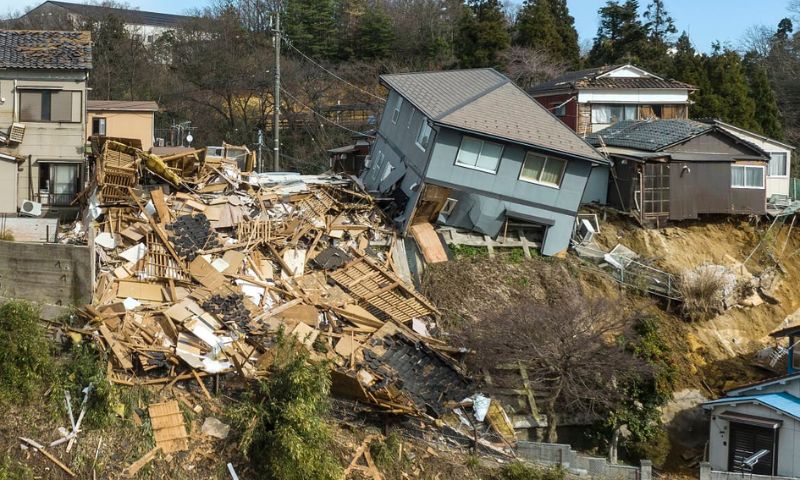ANAMIZU: The death toll from a powerful earthquake in Japan has reached at least 73, with tens of thousands grappling with power outages, water shortages, and extensive damage to infrastructure. Rescuers are contending with heavy rain, blocked roads, and ongoing aftershocks, complicating efforts to reach affected areas.
The 7.6-magnitude quake struck the Noto Peninsula, particularly impacting port towns like Wajima and Suzu, turning streets into mud, flattening houses, and submerging boats. Emergency vehicles, blaring sirens, faced significant obstacles navigating roads obstructed by rocks and fallen trees across the Ishikawa prefecture on the main island of Honshu.
“I can never go back there. It is unlivable now,” said Yoko Demura, a 75-year-old resident whose home was reduced to rubble. “It makes me sad, and I will miss it.”
The death toll stands at 73, with nearly 400 people injured, but authorities expect the number to rise as search and rescue operations continue. Over 33,400 people sought shelter, and more than 200 buildings collapsed. Road conditions hamper the delivery of emergency supplies, despite ample provisions.
Relief Efforts in Japan’s Quake-Hit Areas
Prime Minister Fumio Kishida, after an emergency task force meeting, announced an increase in military personnel and rescue dogs deployed to the region. Despite challenges, relief efforts are underway, with food and emergency supplies reaching affected areas.
Electricity and water shortages continue, affecting more than 30,000 households in Ishikawa prefecture, and over 110,000 households are without running water. Aftershocks add to the peril, causing anxiety among residents already dealing with collapsed homes.
The earthquake, measuring 7.6 according to the Japanese weather office, generated waves over 1.2 meters high in Wajima, triggering smaller tsunamis elsewhere. Japan, accustomed to seismic activity, has faced over 400 aftershocks since the main quake.
The Noto region has experienced an increase in both the strength and frequency of earthquakes over the past five years, attributed to complex fault systems below the peninsula. The nation’s history with earthquakes remains marked by the devastating 2011 quake and tsunami that led to the Fukushima nuclear disaster. In the current situation, minor damage has been reported at some nuclear power plants, with no threat to the environment or the facilities themselves.























